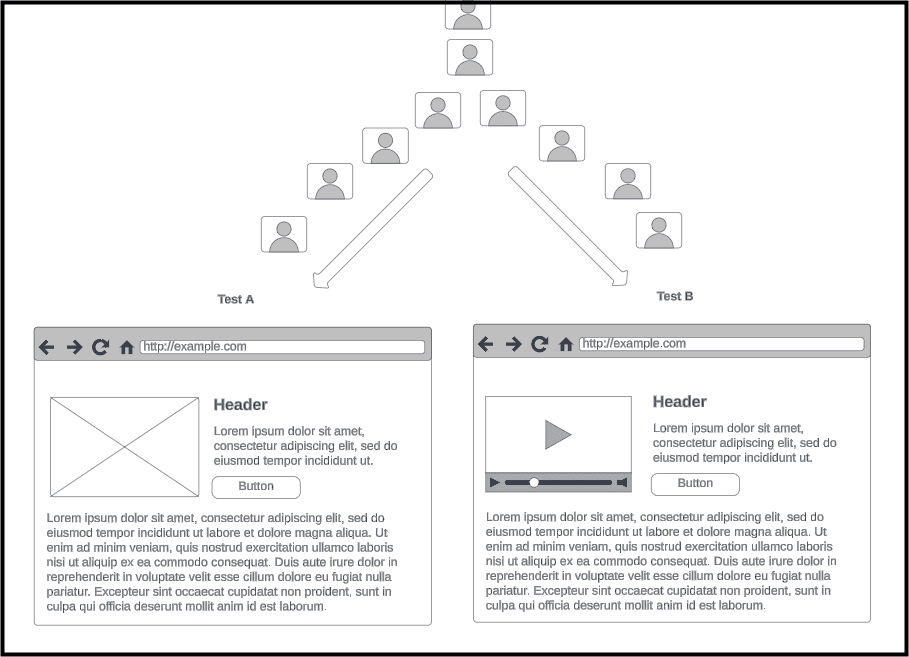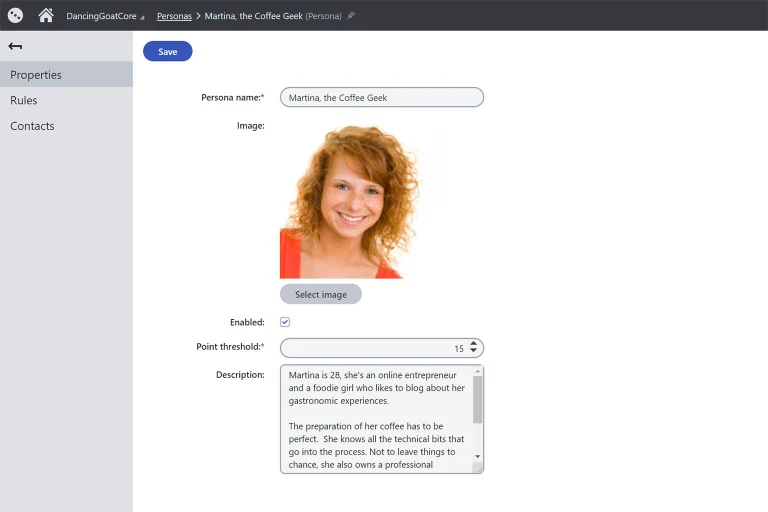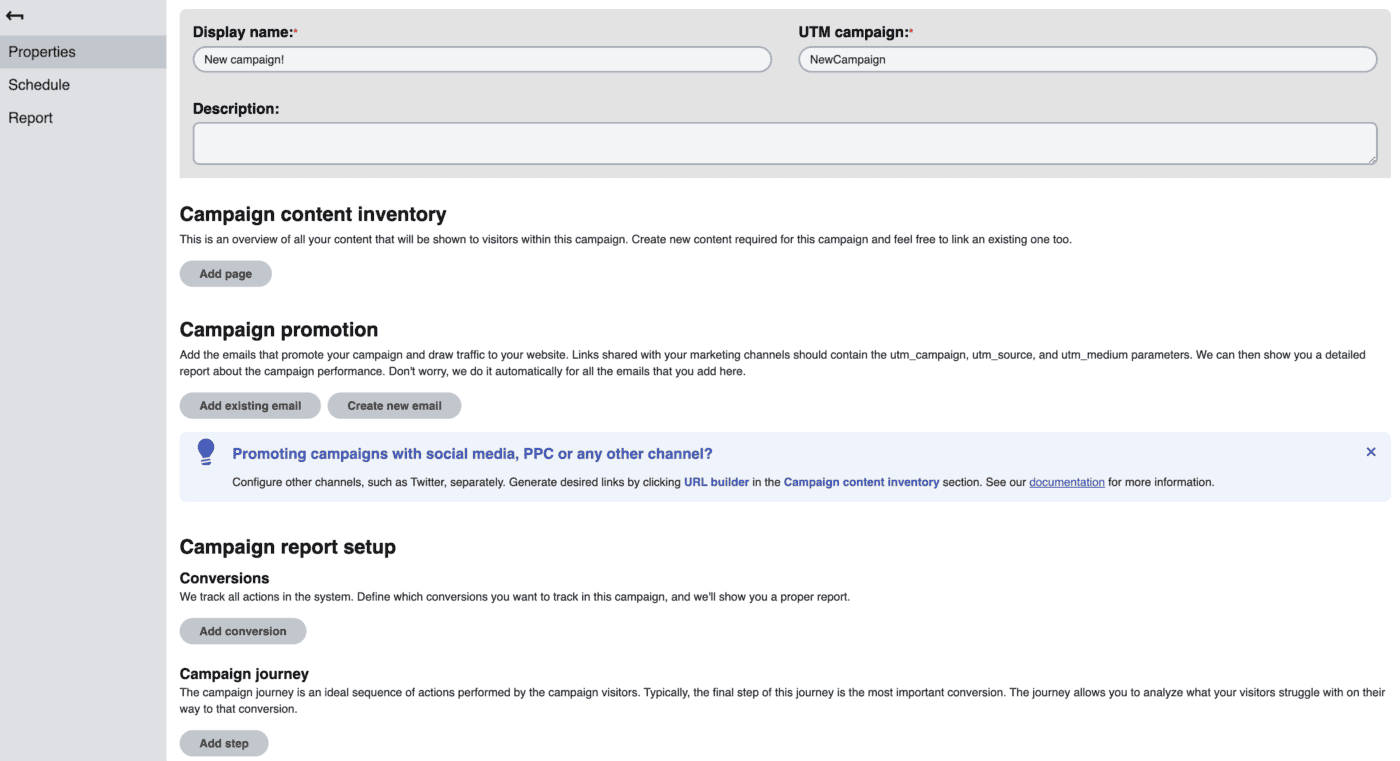At Bizstream, we build a lot of websites, many of which are on the CMS platform Kentico. We’ve helped many clients use some of Kentico’s best features. Page builder widgets for example, make content creation extremely easy for marketers. Widgets let content admins drag and drop, copy and paste, and rearrange content with only a few clicks.
On the flip side, we see a lot of great features that are often underutilized in Kentico. Some of these features might not be useful for every company, but many would do well to add them to their marketing arsenal. We’re going to be looking at three:
Using these tools, marketing teams can greatly expand their understanding of their customers and create more targeted and relevant content.
A/B testing is when you display two types of marketing content to different audiences to see which performs better. For instance, a website may be performing an A/B test for the image used on a specific featured item.
A/B testing is one of the most under-utilized features in marketing. Instead of spending time arguing internally whether a page should feature an image or a video, creating an A/B test and seeing which one performs the best can give you fast and accurate results. You may find one beats the other by a landslide, or you may find there is hardly any difference at all.

First, A/B testing needs to be set up in order for content admins to be able to use it. Once enabled, content admins need only to go to the page they would like to create an A/B test on and select “Create an A/B Test”. This will open a modal that will then allow the content admin to configure, start, and evaluate the A/B test.
First, just as we all learned in science class, you can only test one variable at a time. If you create an A/B test with several different elements between the two pages, you won’t know why one performed better than the other. As you can see in the image above, the only difference between the two tests is that one has an image, and one has a video.
A/B tests should have a limited duration. Get the answers you are looking for, then choose the better performing test. If you’ve had 5000 site visitors since beginning the test and 70% chose option A and 30% chose option B, that is plenty of data to know which to go with. Keeping an A/B test running for too long can hurt SEO.
While you should only have one primary difference between any given A/B test, you can (and should) have multiple A/B tests going at any given time. Once you know which option is performing better or if there is no significant difference, iterate on the last test to continue improving your content. This will allow you to continue learning from your customers about what content they like and don’t like.
For many companies and organizations, they don’t have a single type of audience coming to their website. Different audience types viewing your site may not overlap in user behavior, interests, attributes, and characteristics. As a marketer, you want to show content relevant to the customers viewing the site, not content that is irrelevant to them.
This creates a challenge for marketers since it seems like your choices are either to show multiple types of content (which means showing things to users who don’t want to see it) or only show generic content that could be for everyone but that isn’t as helpful for anyone.
This is where personas prove their worth. Personas allow marketers to easily segment users by their behavior and attributes and then tailor content to those users based on the persona they fall into.

For example, let’s say you have a company that sells running shoes. One audience type is for someone who is simply looking for a new pair of shoes. Let’s call that audience “New Buyers”. Another known customer is someone who is looking for races that you have listed on the site. This audience is called “Racers”. Finally, there are some customers that are raving fans of your brand and often buy merchandise and specialized shoes that have a limited amount made. Let’s call this audience “Loyalty Customers”.
In Kentico, content admins can define these personas by assigning “points” to a user who matches certain attributes and behaviors. Personas are then set at a threshold and once a user meets that threshold, they are added to that group. For example, let’s set up the following point values and thresholds for our three user groups.
– Opens a product page – 66 points
– Comes from selecting an advertisement – 80 points
– Selects an events detail page – 34 points
– Submits a form to keep updated on racing events – 75 points
– Registers for an event – 100 points
– Selects a limited shoe product – 51 points
– Purchases a limited limited shoe product – 100 points
Let’s say a user comes to the site and does the following:
This user would receive 146 points for being a new buyer and 109 points for the Racer’s audience. Since the user is further past the New Buyer threshold as a percentage, Kentico will place them in that persona.
Content admins can then use this knowledge to create specific content to that persona type through their site, email blasts, and campaigns, giving users content that is specific and relevant to them.
Kentico offers campaigns to track and measure traffic to your site using cookies. This helps content admins see which marketing strategies are most successful and which aren’t working. Similar to tracking personas, campaigns let admins define conversions by their actions on your site.
Campaigns can be used to promote a new product or simply to attract more users to your site. Once a campaign is running, content admins can see the number of visitors who came through it and how many were ultimately converted.

Okay, it is not Kentico-specific, but I need to call this one out as a bonus item. You may be saying to yourself, GA4 is not an under-utilized feature, every site has GA4 these days. Maybe, but how well do your marketers actually use it? Do they know what they are tracking? More importantly, do they know what the data they are tracking means? More importantly still, are they listening to what the data is telling them? If you answered no to any of these questions, I would argue that you are not using Google Analytics to its full potential.
Kentico, like many CMSs, has many great features. Some may take more time getting used to or figuring out how to use them, but the ROI can make it well worth the time. A/B testing, personas, and campaigns are all powerful tools for elevating your marketing and website game to the next level.
Ready to elevate your marketing efforts on your Kentico website? Contact us to get started!

We love to make cool things with cool people. Have a project you’d like to collaborate on? Let’s chat!
Stay up to date on what BizStream is doing and keep in the loop on the latest in marketing & technology.